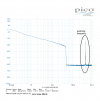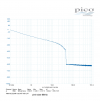I myself anyway, like to see the 8 ohm rating followed by how much extra is available into a 4 ohm load (I remember being shocked how some of the now vintage US high end behemoths doubled their power from 8 to 4 to 2 ohms and some even managed not to melt into 1 ohm as presented by certain panel speakers back then. Next to see how the distortion changes into evermore cruel loads and out put levels.
That's my excuse and I'm sticking to it

100W into 8 ohms at the distortion 'knee' and hopelly double into 4 with little to no increase in distortion

Reading other replies does now make me think that as few speakers are nominally 8 ohms now, that measurement rating is out of date - a factor of my being around and about for far too long now

Anyway, please keep doing what you're doing, 'cos I and others find it fascinating




